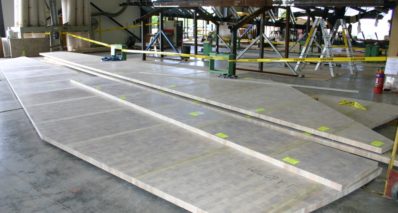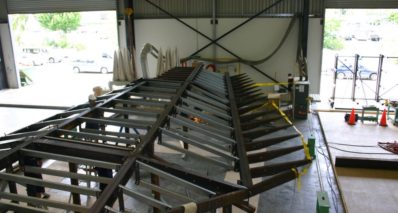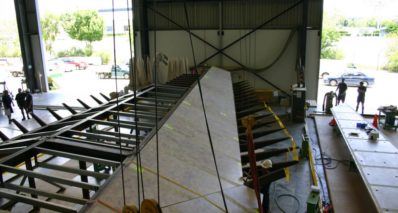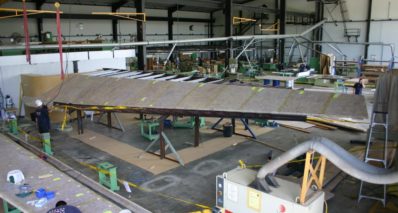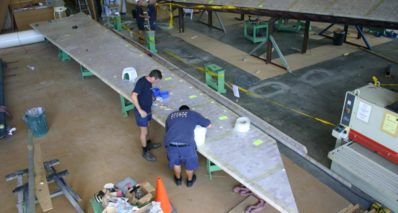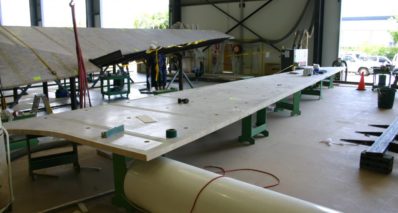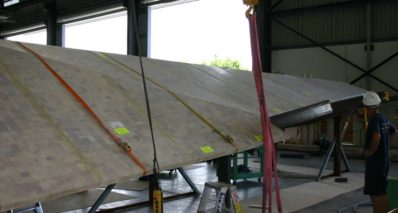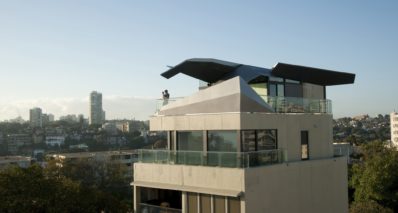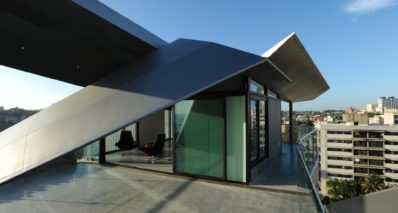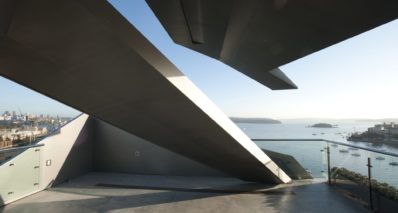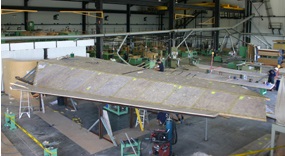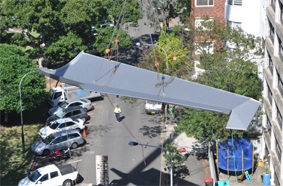Projects
Richard Goodwin Architecture 17.5m Cantilevered Roof - Deepdene
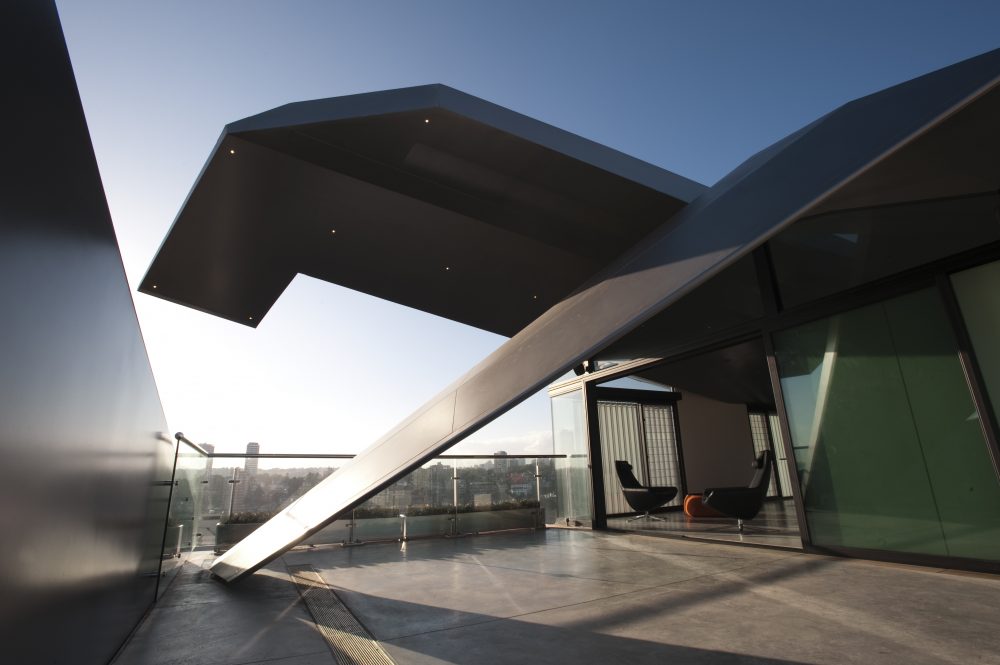
Design Concept
The brief for this project called for a new level extension to the existing penthouse on 110 Elizabeth Bay Drive, which would add a lounge and deck to the apartment below. The client wanted to drastically improve the carbon footprint and sustainable qualities of this 60’s building. They also wanted the work to be transformative as art or sculpture. The design metaphor I chose was that of the fruit bat flying over the Baobab tree in the Botanical Gardens. I was able to work with Iain Murray, of America’s Cup fame, and my engineer Harry Partridge to complete a fibre-glass/carbon fibre and steel roof. It was built like a yacht and delivered in 3 pieces to the site.
The final roof collects and uses all roof water via basement tanks. Working with the yacht manufacturers led to a breakthrough in the finished surface of the roof drastically reducing UV damage. As a work of sculpture the folding plates of the wing also reach down into the action of the roof deck or outside area. A shard of wing actually imposes itself into the action of the deck as a wall-like giant animal wanting to be patted. The result speaks for itself. The separate parasite is a shared public art piece which forms a synthesis with its building of origin. It radically transforms the existing structure without destroying the host.
Construction
Azzura Marine, Queensland is accomplished at manufacturing vessels up to 74 meters in length in timber, composite, aluminium and steel. AM also provides technological advances and ultra-fine craftsmanship to deliver premium quality interiors, for five star hotels and other architectural and commercial applications.
Azzura’s latest architectural project incorporating DuFLEX® Composite Panels manufactured by ATL Composites, is a cantilevered roof for a 6 story building in Sydney, Australia.
Designed by architect Richard Goodwin, the spectacular roof shape, with a cantilvered section, was modeled on the angular shapes of an F117 jet. Wind ratings, weight, strength and stiffness had to be considered in the design, and in the choice of fabrication materials. ATL engineers did the composite engineering including finite element analysis for the project.
The need to reduce the overall thickness required a combination of materials to be used, as it could not be achieved with normal steel fabrication. ATL’s DuFLEX® panels cored with BALTEK® SB.100 end grain balsa, were used as they contributed structurally, while still meeting the weight and stiffness requirements.
ATL Composites manufactured the DuFLEX® panels and CNC-routed the roof parts from electronic files. The panels were delivered and joined on site at Azzura Marine by ATL, so the full sized parts could be assembled directly onto the steel support structure.
John Briggs, Project Manager for the job, said “The functionality of the DuFLEX / balsa panels was perfect for the project from a weight and strength perspective, and having them joined to the full size parts on site for assembly was fantastic.”
The roof was disassembled into 4 components, and shipped to the building site in Sydney. The parts, the largest piece being 3.6m x 17.5m, were lifted and positioned using a 140 tonne crane with an 87m boom.
